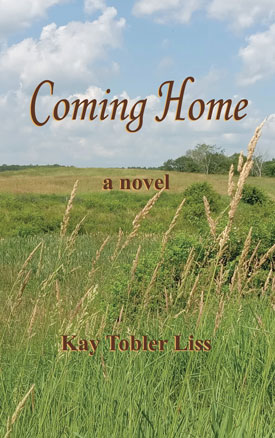Coming Home
By Kay Liss, Plain View Press (2023)
In the title essay of William Maxwell’s The Writer as Illusionist: Uncollected & Unpublished Work (Godine Nonpareil, 2023), the author and New Yorker editor says of the “good novelist” that “you can lean against his trees; they will not give way.”
A majestic oak stands at the center of Kay Tobler Liss’s second novel, Coming Home, and it holds firm. The tree serves as a place of comfort and renewal for a family in the late 1980s dealing with various dysfunctions. From the viewpoint of the novel’s central character, Lydia, the oak’s “maze of twisting, intertwining branches and vines…appear…to want to enfold them all in its dense brown and green realm.”
This arboreal eminence wreathed in Spanish moss is located on the banks of the Cape Fear River in Southport, an “antebellum town” in North Carolina and setting for much of the story.
Each character carries some kind of personal burden, some greater in impact than others.
Reunited for Christmas, four generations rally beneath the mighty tree to hear the grand dame of the clan, Zipporah, offer a confession and an apology, but also a benediction that leads to redemption and reconciliation—a way to climb out of what Liss calls “emotional crypts.”
“In dreams begin responsibility,” wrote Shakespeare—and, Liss might add, possibilities for reinvention. Several dreams woven into the narrative play a significant role in guiding and shaping the characters’ actions and aspirations. Lydia and her mother Eugenia, Gigi for short, both find prompts in their sleep visions to renew their pursuit of, respectively, dance and painting.

Each character carries some kind of personal burden, some greater in impact than others. The accidental drowning of Evan hangs over everyone, especially Lydia’s brother Daniel who blames himself for their sibling’s death. Trees once again come to the rescue, by way of a grove of towering pines that triggers memory and healing.
Much of the story is devoted to the 38-year-old Lydia, who writes/edits for an architectural magazine. She had been a dancer in her early life and yearns to return to it. Thanks to a budding romance with a colleague, she not only revives her passion but also gets to write about it. (The latter turn of events brought to mind the recent passing of Joan Accocella, the eminent dance writer.)
The novel is evenly paced. The action is minimal. This is a story of coming to grips with the past through thoughtful interactions. The dialogue, which at times can feel a bit stiff, often drives the chronicle and its character studies.
An epigraph on trees from William Blake, lines from Wallace Stevens’s “13 Ways of Looking at a Blackbird,” a blue gentian, a scene in a garden in Manhattan’s Fort Tryon Park, and the origins of the word humility (“humus, meaning earth, a returning to the earth”) all underscore the importance of the natural world to Coming Home’s storyline.
Liss, who lives in Jefferson, posts reflections on nature on her website, www.kaytoblerliss.com, responding to her rural surroundings and the seasons. In this novel she turns that passion into notable prose.
Carl Little’s latest book, with his brother David, is Art of Penobscot Bay. He lives on Mount Desert Island.





